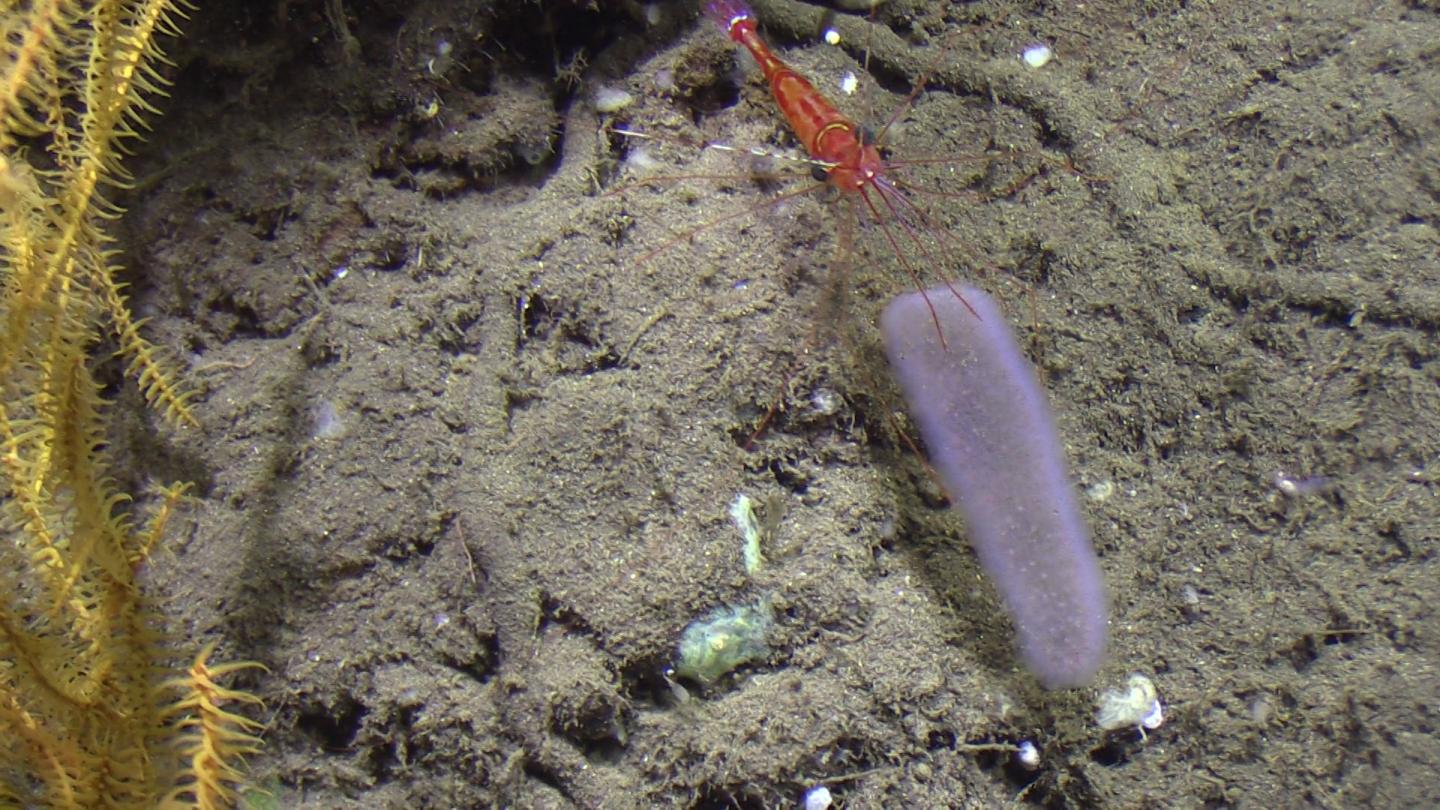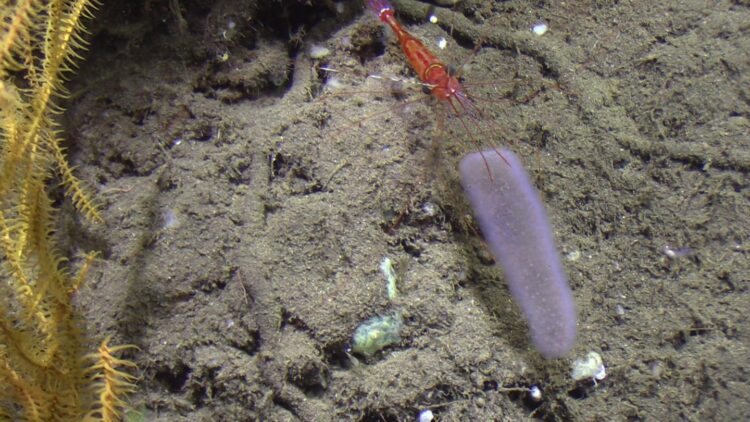New study led by GEOMAR provides fascinating insight into a largely unknown marine life form

Credit: JAGO Team, GEOMAR.
Pyrosomes, named after the Greek words for ‘fire bodies’ due their bright bioluminescence, are pelagic tunicates that spend their entire lives swimming in the open ocean. They are made up of many smaller animals, known as zooids, that sit together in a tubular matrix, known as tunic (hence the name pelagic tunicates). Because they live in the open ocean, they generally go unnoticed. In spite of this, increasing research points to their importance in marine environments, as they can form dense blooms that impact food web dynamics and contribute to the movement and transformation of organic carbon.
The study conducted with GEOMAR research vessel POSEIDON in 2018 and 2019 in the vicinity of the Cabo Verde Islands, of which the results have now been published in the international journal Scientific Reports, addressed important research gaps; observations on the interactions between pyrosomes and their environment have rarely been made in the water column. Most studies that investigated pyrosomes with submersibles looked at moribund colonies on the seabed or used net catches that generally disrupt species interactions. Furthermore, the aim was to estimate the contribution of these organisms to the local marine carbon cycle. For the eastern Atlantic such information was still largely unknown.
“Because we combined underwater observations, sampling and genetic analyses, we were able to gain several new insights into pyrosome ecology”, says lead author Vanessa Stenvers, from GEOMAR. During the expedition, the organisms were observed directly with the research submersible JAGO, and also studied via a pelagic towed camera system, PELAGIOS, as well as by net and water sampling.
“Our study shows that pyrosomes form an important biological substrate in the water column that other animals use for settlement, shelter and/or as a food source”, explains Vanessa Stenvers. “We have estimated that Pyrosoma atlanticum provides up to 0.28 m2 of substrate area per square metre of total area during a bloom period. This is a huge number if you consider that there are little physical features in the water column besides the animals that live there”, says the marine biologist.
Thanks to the underwater observations, the team also discovered several new species interactions, including the jellyfish Drymonema gorgo, which fed on pyrosomes, and a yet undescribed oxycephalid amphipod that was frequently observed on pyrosomes. Upon closer inspection, these amphipods had removed individual zooids to create a cavity in the colony into which they retreated upon disturbance.
Pyrosome blooms were found to be related to high values of chlorophyll. Since the filter-feeding organisms directly consume microalgae, they profit from upwelling conditions that are found both on the lee side of the islands as well as in mid-ocean eddies. The latter are circular currents that can move cold nutrient-rich water from deeper depths up to the surface.
“Furthermore, we found that Pyrosoma atlanticum plays an important role in how about the vertical transport of organic carbon in the waters around the Cabo Verde Islands”, explains Dr. Henk-Jan Hoving, who leads the Deep Sea Biology research group at GEOMAR and is senior co-author of the study. Pyrosomes migrate up and down the water column daily to feed in the productive upper marine layers at night. At dusk, they migrate back to deeper water layers. During this migration, they actively transport their feces to these depths, while also releasing carbon through respiration. “In addition to observations and theoretical estimates, we have been able to show with the detection of environmental DNA from water samples that pyrosome material can also be detected below their migration range, i.e. sinking into the deep ocean”, explains Dr Hoving.
Another way for pyrosomes to contribute to the carbon cycle is by deposition of dead and dying colonies to the seafloor, where they act as food for organisms living there. “From the submersible JAGO, I observed that pyrosomes were consumed on the seafloor by decapods, such as large crabs, shrimps and hermit crabs, illustrating their important role as food for seabed scavengers”, says marine biologist and co-author Rui Freitas of the Marine Institute at the Universidade Técnica do Atlântico, Mindelo, Cabo Verde. “Thus, the present results illustrate the important and versatile ecological role of Pyrosoma atlanticum in the ocean around the Cabo Verde Islands, affecting both pelagic and benthic ecosystems”, Henk-Jan Hoving concludes.
###
Media Contact
Henk-Jan Hoving
[email protected]
Related Journal Article
http://dx.





